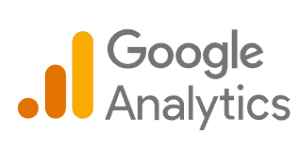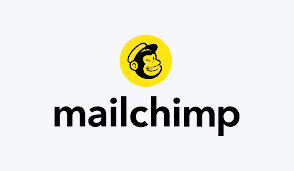Customer Segmentation Software: Our Top 4 Picks In 2024
- Jeffrey Agadumo
- March 9, 2023

Hey, It’s 2024, and you know what businesses now are trying to do, especially amid this economic turmoil?
Attracting new customers while keeping the old ones happy!
To do this, they must continuously carry out effective marketing campaigns. How do we even make marketing campaigns effective?
-Create lasting connections with the customers by personalizing the customer experience.
Here’s an open secret, different customers have different needs and preferences. Your marketing and sales strategies must effectively cater to the unique needs and preferences of the different customer segments. Doing this demonstrates that your brand truly understands and values each customer.
With what results? Increased customer loyalty, brand reputation, and profit levels.
Ready to take your business to the next level? In this article, we take an updated look at how you can get to know your customers to give them a personalized experience, one they will always remember.
You’ll learn about the best customer segmentation software in 2024, to help you analyze customer behavior and preferences and uncover relevant customer insights.
Are you ready? Let’s start with customer segmentation.
What is Customer Segmentation?
Customer segmentation is about putting your customers into smaller, more meaningful groups called customer segments based on their common traits.
This powerful strategy gives you insight into your customers and you can then leverage those insights to improve customer experience.
Customer segmentation is like having different buckets of knowledge about your customers and drawing on the insights therein whenever there is a need.
Let’s see some of those customer segments.
Familiar Customer Segments
The truth is that no two businesses are exactly alike, the same goes for their customers, products, and services. That’s why customer segments vary so much from one company to another.
Yet, even with all that variety, a few classic segmentation models can apply to almost any business. Here are a few classifications that work across almost every business.
- Demographic Segmentation: This segment groups customers based on age, gender, income, and education.
- Psychographic Segmentation: groups based on the personality, values, attitudes, interests, and lifestyle of the customer.
- Behavioral Segmentation: dividing the market based on customer behavior, such as usage rate, customer loyalty, and customer benefits sought.
- Geographical Segmentation: dividing the market based on geographic variables such as region, climate, and population density.
- Firmographic Segmentation: dividing the market based on variables related to the business, such as industry, company size, and revenue.
After grouping customers based on their traits, the next thing businesses do is to carry out customer segmentation analysis. Let’s look at that next.
Customer Segmentation Analysis
Businesses analyze consumer data in customer segmentation analysis to identify and understand different segments or ‘buckets’ of customers within their niche.
Analyzing and categorizing customers based on shared characteristics helps you gain valuable insights and tailor your marketing and sales strategies to meet each segment’s unique needs and preferences.
Data analysis is important in identifying high-yield customer segments. It helps streamline and guide your marketing and product development strategies to target these segments.
Customer segmentation software is a very important tool to include in your data stack when conducting segmentation analysis.
What makes customer segmentation software very essential?
For a start, they are tools with distinct features and the ability to gather, analyze, and profile customer data.
They are used to create reports and beautiful visualizations and can seamlessly integrate with other third-party tools for more accurate segmentation.
Why is including the right customer segmentation software in your modern data stack a brilliant idea?
Let’s look at reasons why such a tool would be a brilliant addition to your data stack.
Benefits of A Good Customer Segmentation Software
Are you contemplating adding customer segmentation software to your data stack? Here’s why you should have such a tool in your stack.
The right tool can:
- Improve Customer Insights: Utilizing customer segmentation software enables your business to gain deeper insights into your customer base, facilitating more targeted marketing efforts.
- Enhance Profitability: With a clearer understanding of your customers, you can tailor your marketing campaigns more effectively, leading to increased revenue and improved profitability.
- Lower Customer Turnover: Implementing customer segmentation software assists in identifying valuable customers and implementing targeted retention strategies, thereby reducing customer churn.
- Help Optimize Marketing Budget: With it, you can pinpoint the most responsive customer segments and identify the most effective marketing channels, then you can streamline your marketing strategy and minimize unnecessary spending on less productive campaigns.
Are you thinking of the best customer segmentation software to include in your modern data stack?
Here are our top 4 picks for you.
Our 4 Favorite Customer Segmentation Software
Various tools out there can be used for customer segmentation. But we have selected the top 4 with top-notch features for you.
Here they are.

Google Analytics is a web analytics service that tracks and reports website traffic. It provides insights into website visitors’ behavior, including where they come from, what pages they visit, what actions they take, and how long they stay.
With this platform, you can create tailored visitor segments using a variety of characteristics, including behavior, location, technology, and more.
This approach allows you to gain insight into the behavior of different visitor groups on your website and fine-tune your marketing strategies to suit their needs better.
2. Mailchimp

Mailchimp is a popular email marketing platform that provides tools for businesses and individuals to create, send, and track email campaigns. It has features for managing subscribers and automating targeted email campaigns based on subscriber behavior.
Mailchimp provides tools for segmenting your email list based on subscriber characteristics such as location, signup date, purchase history, and more. You can send targeted and personalized messages to specific groups of subscribers based on their interests and behavior.
With this tool, you can increase the relevance and effectiveness of your email campaigns, leading to higher click-through rates and, ultimately, better engagement with your customers.

Adobe Audience Manager is a powerful data management platform designed to create and manage audience segments and use that data to inform and improve advertising and marketing campaigns.
The platform collects and gathers data from various first and third-party sources – website activity, offline transactions, mobile devices, and more – to create unique customer profiles.
With these insights, you can craft relevant content and advertising to engage your audience better.
4. HubSpot:

HubSpot is a marketing automation platform with robust customer segmentation capabilities. It allows users to segment customers based on various criteria such as demographics, behavior, and interactions with the company’s website or emails.
So what do you need to keep in mind when deciding on what software tool to choose?
Things to consider when choosing a customer segmentation software
The needs and budgets of your business are the top factors that should dictate which tool you choose to use.
In addition, when choosing customer segmentation software, the answer to the following questions can act as a guide.
- Ease of use: How easy is it to set up and use the software?
- Data sources: What data sources does the software integrate with?
- Segmentation criteria: What criteria can you use to segment your customers?
- Reporting and analytics: What reports and analytics does the software offer?
- Pricing: How much does the software cost?
But what if there is the perfect product for your analytics journey? Let’s introduce you to Datameer.
A Data-Centric option.
Datameer is a data analytics software that allows businesses to analyze large volumes of structured and unstructured data from various sources.
It offers an easy-to-use interface for data preparation and exploration, which enables business users to gain insights and make informed decisions more quickly.
Whether your organization deals with a high volume of customer data and demands a robust analytics infrastructure or you seek a dependable cloud-based data analytics solution, Datameer is an intelligent choice to drive your analytics processes forward.
Here are some features of Datameer that make it ideal for customer segmentation.
- Data Integration: Datameer allows you to integrate customer data from multiple sources, such as databases, spreadsheets, and cloud storage systems, into a single, centralized location for analysis.
- Data Preparation: Datameer provides tools that allow you to clean, normalize, and transform customer data into a suitable format for analysis.
- AI/Machine Learning Capabilities: With Datameer, you can access a range of machine learning algorithms that help to automate customer segmentation analysis. It is also perfect for training machine learning models on customer data and using the models to segment customers and predict customer behavior. With Open AI integrated into Datameer, you’ll get instant access to metadata, actionable intelligence, and insight for all your datasets.
- Collaboration: Datameer allows you to share customer segmentation analysis with stakeholders and work together to refine and improve the results.
Sounds like what you’re looking for?
Get started now to learn more about Datameer and how you can tailor it to meet your business analytics needs.


